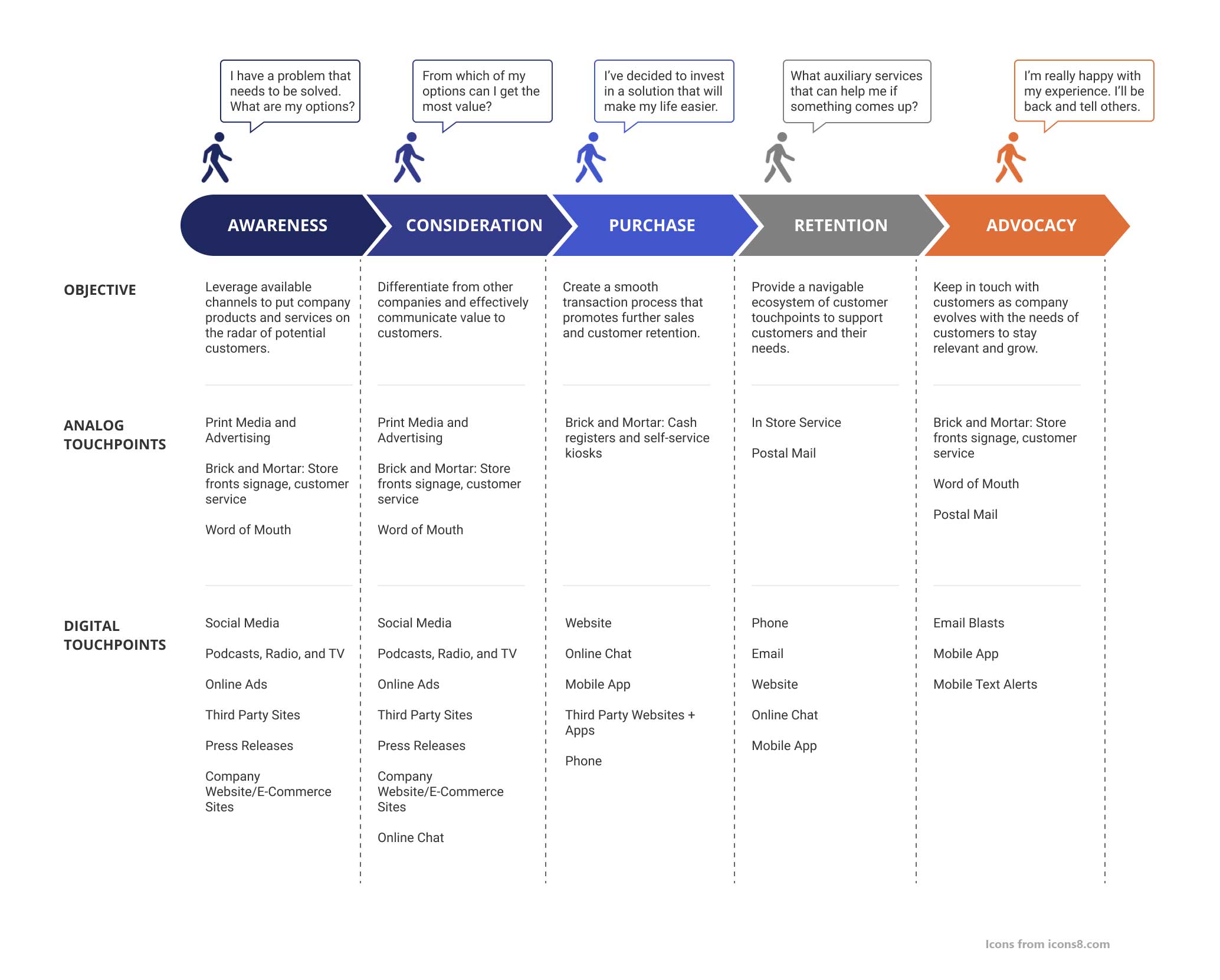4-minute read
Since the COVID-19 outbreak began impacting the world earlier this year, there’s been an incredible disruption forcibly altering how companies and their employees interact with customers and each other. This new reality reminds us not only of how social we are by nature, but also how much we rely on analog interactions.
While we have adapted to this “new normal,” it has provided many challenges to overcome. This is clearest in the service sector, where hard-hit businesses are innovating and iterating. As organizations continue to adapt, user experience is an important priority for businesses to stay relevant and keep their doors open.
A digital-first landscape
Traditionally, businesses have had multiple touchpoints to interact with customers, both in-person and online. At all stages of the sales funnel, from brand awareness to customer engagement to advocacy, brands leveraged a combination of experiences on different fronts.
The playing field has changed
COVID-19 has altered consumer habits, reshaping how their needs are met. Many businesses shuttered their doors, choosing instead to prioritize safety and move their efforts online. While traditional ways of doing business became limited, the pandemic opened space for companies to explore the digital frontier.
Almost overnight, the digital space became the main stomping ground for consumers stuck at home and the main playing field for commerce as companies try to maintain and grow their bottom line. Websites, apps, social media, email, and text are now where connection, advertising, and customer service happen. Whether you are a company offering a good or service or your employees are using internal systems to provide that offering, everything now begins with either a tap, swipe or a click.
User behavior is different—and the users are, too
As businesses have changed, so too have their customers. People are staying at home, experiencing long call hold times and adapting to new technology. In the context of financial, social, and personal insecurity, users and their behavior have shifted considerably:
• 37% of consumers currently prefer to satisfy their core needs while staying indoors. (Source)
• People are spending more time in digital spaces: for work, relaxation, entertainment, and exercise. (Source)
• Shopping online is the new normal and 30% plan to shop more online in the future. (Source)
More than ever, products and services need to be considerably more clear, convenient, responsive, and efficient while also being more empathetic—allowing for more accessibility for with disabilities and providing more flexibility for all users to error correct and change their minds. A balance is what sets both a company’s offerings and performance apart from their competition. Businesses can no longer afford the opportunity cost tied to poor user experiences.
User experience (UX) is the great differentiator
User experience is often tied with what is traditionally associated with graphic design and branding—logos that intrigue, colors that pop, eye catching visuals, and cool buttons laid out on a digital screen. These are misconstrued as things only for the young, hip, and tech-conscious—but user experience extends far beyond.
User experience is about inclusion and accessibility. It’s about creating mutually beneficial experiences by leveraging careful understanding of the needs, challenges, and motivations of your users. It merges a variety of disciplines including business process, interface design, marketing, and engineering to improve how people experience products and services. User experience requires building a foundation of well-orchestrated flows and interactions that move between touchpoints and provide a seamless experience. It is about understanding your customers’ wants and needs—and creating experiences that fulfill these expectations within business, technology, and time constraints.

How to prioritize UX design for 2021
1. Prepare for the process
Improving your user experience is an investment that takes time. Don’t think that you need—or will be able—to get everything perfect right away. User centered design requires iteration where designers evaluate a problem, learn the users experiencing it, explore solutions, test assumptions, and improve based on findings. The solution doesn’t need to get done all at once.
Also, understand that user experience solutions are not one-size-fits-all. Solutions need to be tailored to specific user demographics in the context of a set of products and/or services through an understanding of their behavior, needs, challenges, and preferences. What might work for a company in a niche market will not work for one with a broad user base.
2. Invest in the right team
If you care about growing and sustaining your business, invest in user experience design professionals whose job is to advocate for your users while keeping technical feasibility and your business’ bottom line in mind. It’s not enough to talk about “user-centered design.” At the end of the day, every member in cross-functional teams has their own set of positionally-focused success metrics they need to meet. Bringing a dedicated professional on board will ensure your customers have a say in development and has the potential to improve your product by leaps and bounds.
3. Communicate proactively
Hit your KPIs, but also think long term. You can go much further by communicating your goals and priorities to your UX design team. Doing so will help facilitate the creation of a UX roadmap, one of the most essential tools in team alignment and future visioning. UX roadmaps are invaluable for building an ecosystem of cohesive experiences over time.
UX is intertwined with everything that companies do; at its core, it’s about advocating for the needs and wants of people, no matter if they are customers, employees, executives, etc. Understanding these people and providing a great experience remains the hallmark of successful, long-lasting businesses—and as we continue to navigate our post-COVID world, paying close attention to user experience is more important than ever.
Like what you see?

Michelle Medina is a Senior User Experience Designer at Logic20/20. She is dedicated to designing effortless interactions that delight customers.

